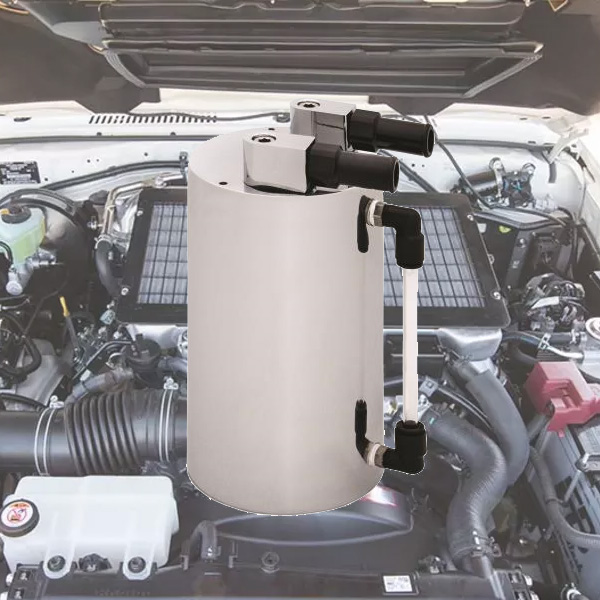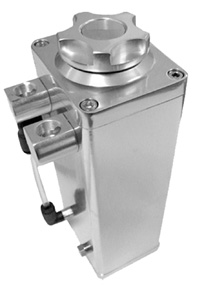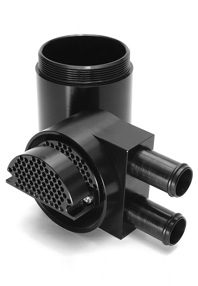
First off, lets take a quick look at how a catch can is supposed to work.
As part of the operation of a typical internal combustion engine, a percentage of the combustion gas leaks past the piston rings. Once in the crankcase, this combustion gas may contain fuel, oil mist, sulphuric acid and abrasive particulate matter.
Typically this concoction escapes the crankcase through the PCV (Positive Crankcase Ventilation) valve and is re-routed back through the engine and burned off.
The Problem?
Over time, this causes deposits throughout the intake of an engine as well as on the pistons and the backs of valves (especially on direct injection engines). The contaminants found in the crankcase vapours can also cause knock and pre-ignition in some circumstances.
The Solution?
A catch-can!
The purpose of an oil catch can is to re-route this mixture through a baffle matrix/filter/oil separator. When the vapour is forced through the baffles/filter, the contaminants condense and are separated from the gas, collecting in the bottom of the can.
This allows the contaminants to be 'captured' while returning mostly 'clean/filtered' vapour back to the intake of the engine. The oil and other contaminants that are captured need to be periodically drained from the catch can to ensure efficient operation.
Why Catch Cans don't work
It's not so much a matter of oil catch cans not working, but moreso the fact that not all 'catch cans' are made equal.
The problem is that the majority of generic 'catch cans' are simply a chamber with no internal baffling or filtration. Fitting one of these units to a vehicle will have little no effect in filtering the engines crankcase vapours.

Inferior style catch can, typically with no internal baffling
Beside generic catch cans, there are a number of imitation catch cans available on the market, posing as the genuine article. These imitation catch cans also usually have no baffling or filtration medium.
So when selecting an oil catch can for your or a customers vehicle, ensure it has a sufficient level of internal baffling and filtration to be effective in filtering crankcase vapours.

Oil catch can with internal baffling/cooling tubes
Why not block off the PCV?
If we blocked the PCV system off, where do these contaminants in the crankcase vapour go?
Nowhere is the answer. Doing so will create a positive pressure in the crankcase that could potentially blow out seals/gaskets or the dipstick and would necessitate very frequent oil changes due to the engine oil becoming acidic as a result of contaminants.
What are your thoughts on Oil Catch Cans?
Let us know in the Mechanic.com.au Private Facebook Group (Members Only)